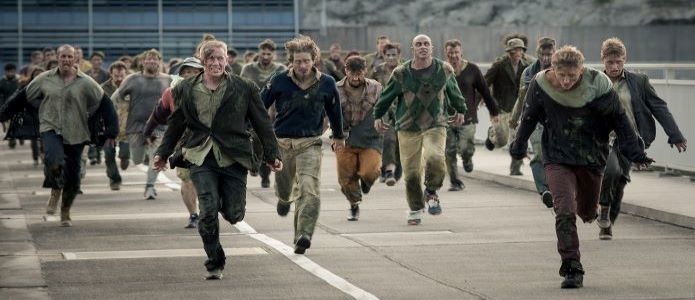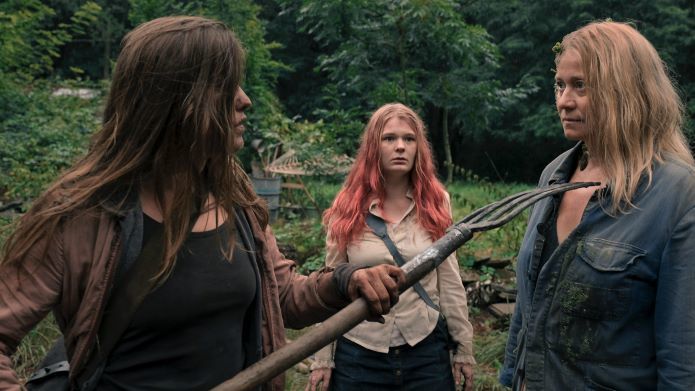Endzeit - Ever After
A Zombie apocalypse with purpose

In a sign of the globe’s ever-concerning socio-political and environmental climate, cinematic apocalypses now arrive with a devil’s advocate-style argument. With such extensive damage wrought by humanity across the planet — against each other, as well as against the earth that we all rely upon for survival — who wouldn’t ponder the benefits of drastic population reduction techniques?
By Sarah Ward
In Avengers: Infinity War and its sequel Avengers: Endgame, the idea was an abhorrence in need of a swift reversal. In Godzilla: King of the Monsters, it’s reason for an oversized creature clash. Smaller in scale though not in weight than its blockbuster thematic counterparts, in Endzeit — Ever After, it’s another way of framing a zombie outbreak.
A German-language feature from a Swedish-born, Berlin-based director, Carolina Hellsgård’s film begins not with a difficult choice, but with a devastating status quo. A virus has left its stain upon the world, the shuffling undead have since made its expanses their own, and only the East German cities of Weimar and Jena remain standing. In the former, a zero-tolerance regime requires the instant execution of anyone afflicted, as the mousy, vulnerable Vivi (Gro Swantje Kohlhof) witnesses and the gun-toting Eva (Maja Lehrer) is forced to carry out. A reluctant odd-couple pairing in the aftermath of their traumatic shared incident working on Weimar’s pieced-together fence, the duo set off for the more progressive and lenient Jena, where hopeful survivors are reportedly working on a cure for the diseased.
NOT JUST A TREND
Coincidental timing, rather than any concerted or intentional effort, explains the big screen’s current ethical obsession with wiping out half of the world or more — and, devoid of overblown special effects and free from long-running franchise constraints, what a rich, purposeful and textured concept it proves here. Endzeit — Ever After isn’t without its struggles, including its episodic plot, boilerplate dialogue and fondness for convenience; however the movie’s decidedly bright, sunny visuals, vast stretches of greenery and fondness for lyricism hint at its willingness to eschew the standard. Indeed, as Vivi and Eva’s story progresses, not only moving forward across zombie-plagued lands in search of sanctuary but stepping into their agonising past experiences through flashbacks, Hellsgård shapes their plight into a feminist-leaning, eco-conscious, historically aware fairy tale where unspeakable horrors might just spark a new beginning.DIGGING BEYOND THE UNDEAD
Of course, zombie movies are never just zombie movies, and haven’t been since George A. Romero’s Night of the Living Dead tackled race within its seminal frames. Sometimes, as seen in recent British movie The Girl With All the Gifts, they unpack gender norms. At other times, as Australian feature Cargo demonstrated, they’re tied to the exploitation of the planet’s natural resources. More still reimagine the past’s bleakest moments, as evidenced to gore-filled, schlock-heavy effect in Dead Snow and Overlord. Endzeit — Ever After tussles with each of these three thematic strands and emerges with its head held high (and still attached, in keeping with undead parlance). At the same time, it also offers its own topical parallels — probing the consequences of a patriarchal society left to fester, the re-emergence of fear-based ideologies, the cruelty directed towards refugees and immigrants, and the treatment afforded anyone who doesn’t instantly fit the mould.In other words, Hellsgård’s is a film with bite — and one that sinks its teeth in even when it only seems to be nibbling softly. There are worse things than the destruction of life as we know it, it posits, by recognising the worst aspects of human existence that we could and should lose.
